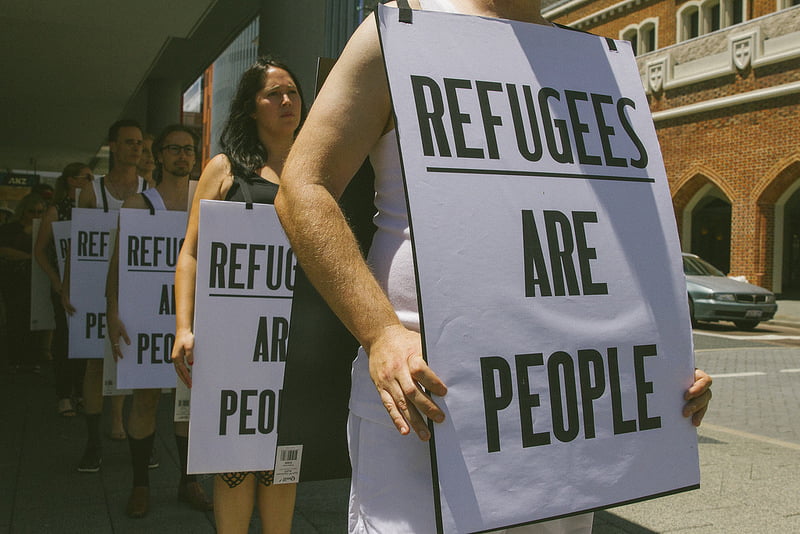Australia announced yesterday that it would be closing its controversial migrant detention center on Manus island in Papua New Guinea following a court order earlier this year. Refugee and human rights groups welcomed the announcement, although it remains unclear what lays ahead for the more than 800 asylum seekers currently housed at Manus and the many others in the same situation at other offshore detention facilities.
The Manus Island Regional Processing Center (RPC) opened in 2001 as part of Prime Minister John Howard’s Pacific Solution that made offshore detention mandatory for all asylum seekers attempting to reach Australia by boat. Over the past 15 years, the Manus center has been a thorn in the Australian government’s side. Allegations of poor treatment and inhuman conditions led to the closure of the center in 2008 but as the number of refugee arrivals rose, the government decided to re-open the center in 2012. Since then, there has been little to suggest that the original issues of mistreatment and abuse have been addressed.
Yet under multiple governments, Australia has continued to push its approach of offshore detention and barring any asylum seeker who tries to make it to Australia’s shores from the possibility of final settlement in Australia. Though the UN and numerous human rights groups condemned the policy, the government insisted it was necessary to deter irregular migrants from trying to reach Australia.
Over time the government expanded its offshore processing and resettlement program in agreements made not just with Papua New Guinea and the island nation of Nauru but also with Cambodia. Australia is also in negotiations with multiple other countries in the region – including Malaysia, Indonesia and the Philippines – to accept permanent resettlement of these refugees in return a hefty payment from Australia.
But things got more complicated earlier this year when the Supreme Court of Papua New Guinea ruled the detention of asylum seekers at Manus RPC violated the constitutional rights of the detainees. The court found the ongoing detention illegal under both Papua New Guinean and international law. This set the stage for closure of the Manus RPC, leaving the Australian government looking for other options.
Manus is just the beginning
Those other options may not be forthcoming. Last week The Guardian released a database of more than 2,000 reports from the RPC on Nauru, Australia’s other main center for offshore detention. The reports span from 2013 to 2015 and are a damning indictment of the conditions facing detainees, the majority of which (77 per cent as of May 2016 compared to 98 per cent at Manus) ultimately qualify for refugee status.
Much like Manus RPC, the center on Nauru opened in 2001 and originally closed in 2008 before reopening in 2012. Many of the allegations of mistreatment, abuse and lack of care for traumatized inmates that haunted Manus RPC were also levied at Nauru RPC. To clamp down on the controversy, Australia passed the Australian Border Force Act last year, which criminalized any public statements by staff and contractors about conditions there. As a result, only small bits of substantiated information have made it out of Nauru RPC, until now.
The reports published by The Guardian highlights just how inhumane the conditions are, especially for children who make up more than 50 per cent of those involved in the incident reports. From frequent threats and actual cases of self-harm to abuse by guards and sexual assault, the reports show that life at Nauru RPC – which can last years – is its own form of hell for those detained.
Those released into Papua New Guinea and Nauru are also in a difficult position. There are numerous reports of resettled refugees being attacked and having trouble integrating into communities that do not want them. While all the governments involved may be comfortable with the offshore processing arrangements, on the local level it is a much different story.
Finding a way forward
Yet for all the evidence that Australia’s current refugee policy is unsustainable and often cruel to those who need the most help, the government is still holding strong to its commitment not to resettle any of those granted refugee or asylum status in Australia. Even Deputy Prime Minister Barnaby Joyce, who has advocated for Australia to accept more Syrian refugees registered with UNHCR, rejects the possibility of Australian resettlement for Manus and Nauru refugees. This leaves the future of those waiting for release and resettlement even more uncertain after typically years of waiting for answers.
With increasingly restrictive refugee policies being implemented throughout the West, the ultimate outcome of Australia’s policy matters, especially as states that are not signatories to the 1951 Refugee Convention are being asked to take on more in light of the global refugee crisis. Developed countries like Australia can and should do more to ensure refugees are able to find safety from the conflicts and political upheavals forcing them from their homes.
As long as policies focused on deterrence rather than accommodation like the detention centers at Manus and Nauru are allowed to endure, the less likely other countries will be willing to shoulder the burden of refugee hosting. The announced closure of Manus RPC is one step in the right direction, but Australia’s track record when it comes to accepting asylum seekers and refugees strongly suggest that it is could merely wind up being a small detour rather than the drastic policy change that is needed.
